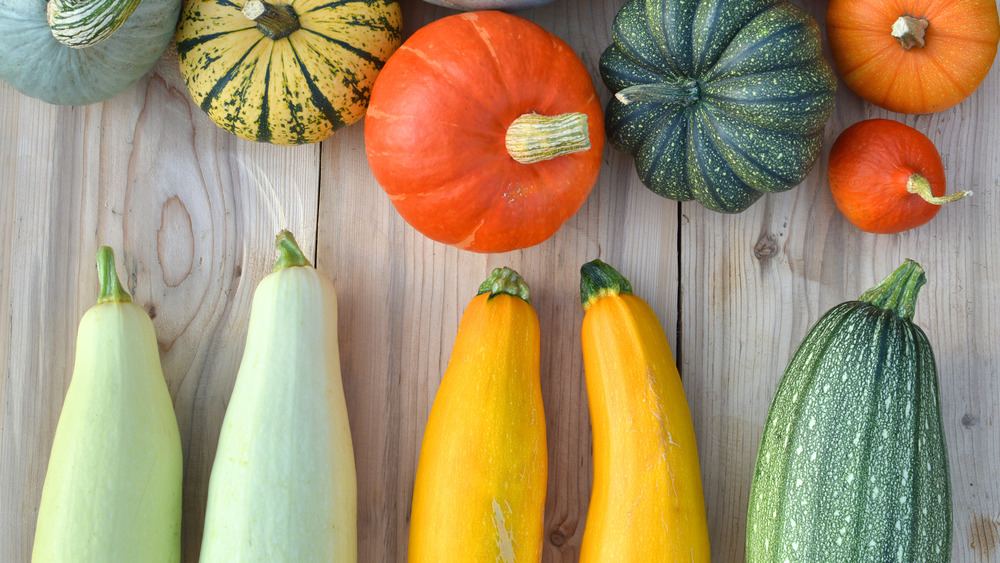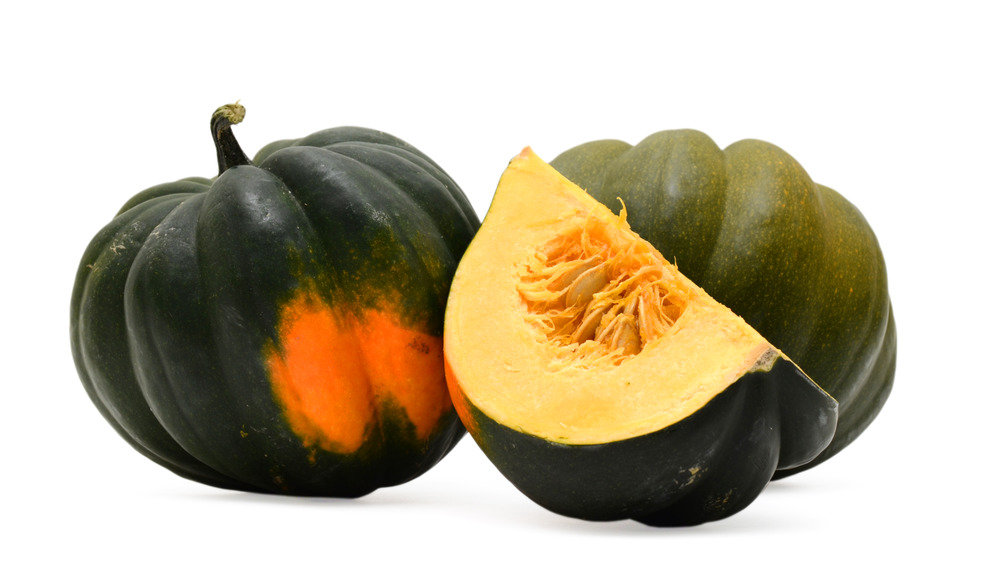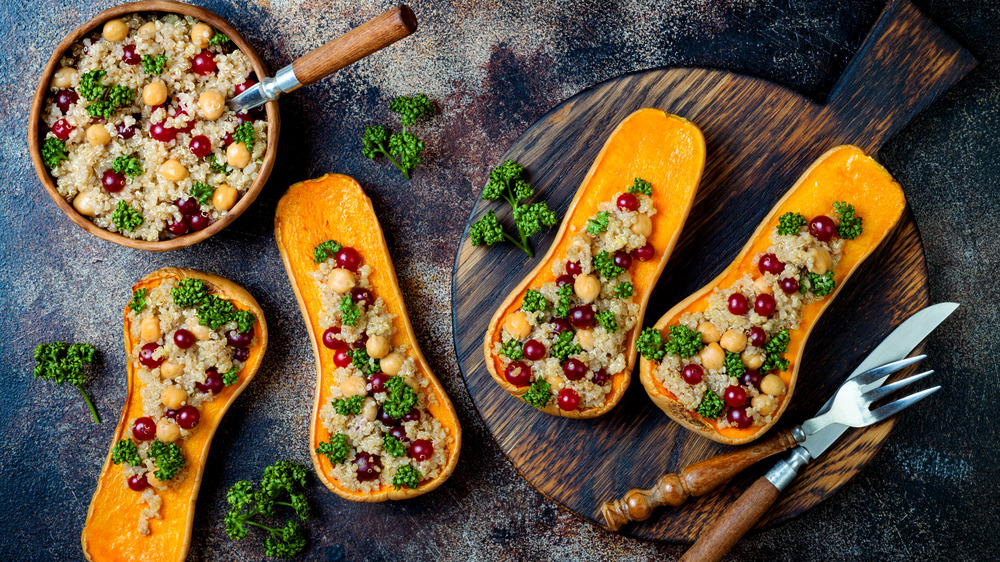Here's Everything You Need To Know About Winter Squash
Just because summer is over doesn't mean our love for squash ends with the season. Luckily, there are plenty of the winter varieties to fill the void if you're unable to find your summer favorites during your shopping expeditions. Per Cooking in America, to be classified as a winter squash, these fruits generally need to take longer to mature before they are ready to be harvested in comparison to their summer friends. Winter squash can also be kept for several months when stored in a cool and dry place. The longer ripening period tends to be around three months in length, and they are generally picked as winter takes over our days.
Winter squash come in all different shapes, sizes, colors, and varieties. They count acorn, buttercup, butternut, calabaza, delicate, hubbard, spaghetti, sweet dumpling, and turban, as well as pumpkin among their family members. Winter squash tends to have a sturdy rind and hard seeds. If the rind is a little soft, it is not ready to be harvested. According to San Diego State University, a hard shell for this fruit is the tell tale sign it is ready to be picked from its vine. But what do you need to know to enjoy these winter squashes and ensure you get the maximum health and cooking benefits in the process? We've got you covered.
Winter squash health benefits
Per Live Kindly, winter squash is packed with more nutrients than summer squash and has the potential to influence your health in several positive ways. This starchy, high-carb fruit can be a great source of beta-carotene if you choose a winter variety that is of the orange persuasion. Our bodies transform beta-carotene into much needed vitamin A, which is essential for a good immune system and healthy vision. Additionally, winter squash often boast a high amount of vitamin C, which also is needed to give our immune system a little oomph during cold and flu season. And generally speaking, winter squash tends to offer us a fair share of fiber, which helps us feel full.
Consumer Reports notes that winter squash is also chock-full of potassium, which can aid in lowering your blood pressure. The one squash that defies all of this goodness is spaghetti squash — but it's still easy on the calories and tastes great, so, definitely keep it on your grocery list. This outlet also encourages squash lovers to give the Trinidadian dish callaloo a go, and to add winter squash if the recipe doesn't already call for it. Callaloo uses pumpkin and something called dasheen bush, which is a little like spinach. It also infuses the flavors of hot pepper and coconut milk into the recipe. Sounds delish! Consumer Reports also suggests choosing acorn, butternut, or kabocha squash for soups.
Different ways to prepare and enjoy winter squash
Because there are a lot of varieties when it comes to winter squash, you're left with a very versatile ingredient for cooking and baking. Per Smithsonian Magazine, you can substitute squash for potatoes when making mashed potatoes. You can also create a pasta using spaghetti squash or add it to your favorite risotto or soup. Stuffing your winter squash is another smart move, and Kitchn suggests using delicata squash as the perfect medium for filling with delicious add-ins.
According to Michigan State University, winter squash can be baked, boiled, or steamed, with steaming being the healthiest of those options. Regardless of which way you decide to cook your squash, it is recommended that you wash the outside of it before you make your first incision. If you are going to steam your squash, you will need to peel it, remove the seeds, and cut it up into cubes. Steaming will take you about seven minutes, which makes it a favorite way to enjoy winter squash on a busy week night.
However, baking squash also has its upsides. You don't need to go through the hassle of peeling or removing the seeds of your squash prior to cooking, and instead, can save this for after it's baked. Simply cut off the ends, split it down the middle, use a fork to make a few holes in the meat to allow for steam to escape, and you are ready to place it in the oven.


